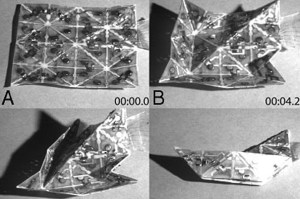Tag: Robert Wood
-
Science & Tech
Wielding a laser beam deep inside the body
Robotic engineers from Harvard’s Wyss Institute and John A. Paulson School for Engineering and Applied Science have developed a laser-steering microrobot in a miniaturized 6 by 16 millimeter package that can be integrated with existing endoscopic tools.
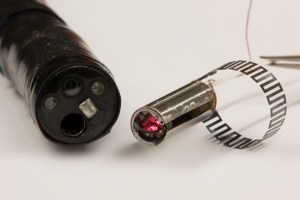
-
Campus & Community
Recipe for a new Gen Ed course
Harvard’s new Gen Ed courses tackle subjects from racial justice and philosophy to music and engineering.
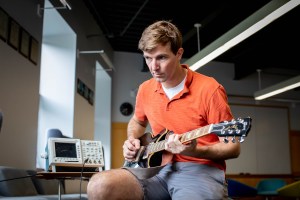
-
Science & Tech
The RoboBee flies solo
Several decades in the making, the Harvard Microbiotics Lab’s RoboBee made its first solo flight.
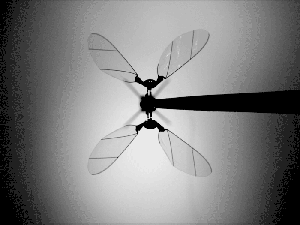
-
Campus & Community
Whew, that’s done!
One of Harvard’s rites of passage is to write a thesis. Students and administrators talk about the process, the requirements, and the ordeal of undertaking an independent project that is unlike any other in students’ College years.

-
Science & Tech
Onward and upward, robots
The first article in a series on cutting-edge research at Harvard explores advances in robotics.
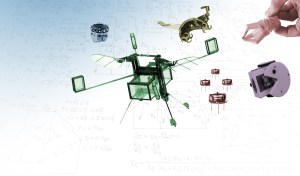
-
Science & Tech
Origami-inspired robot combines precision with speed
A Harvard team has created the milliDelta robot, which can operate with high speed, force, and micrometer precision, making it ideal for retinal microsurgeries performed on the human eye.
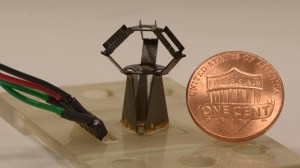
-
Science & Tech
The first autonomous, entirely soft robot
Developed by a team of Harvard researchers, the first autonomous, entirely soft robot is powered by a chemical reaction controlled by microfluidics. The 3-D-printed “octobot” has no electronics.
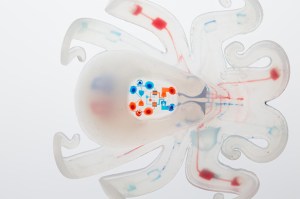
-
Science & Tech
RoboBees can perch to save energy
A RoboBee equipped with an electrode patch is supplied with a charge, allowing it to stick to almost any surface, from glass to wood to a leaf. The patch requires about 1,000 times less power to perch than it does to hover, extending the operational life of the robot.
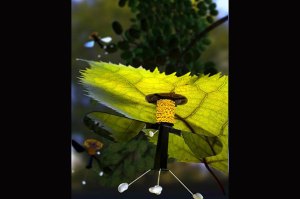
-
Science & Tech
Robotic insect mimics nature’s extreme moves
A team of researchers from Harvard and Seoul National University has unveiled a novel robotic insect that can jump off the surface of water. In doing so, they have revealed new insights into the natural mechanics that allow water striders to jump from rigid ground or fluid water with the same amount of power and…
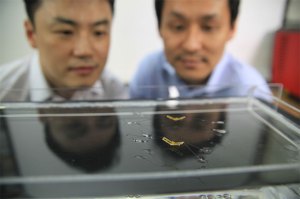
-
Science & Tech
Cutting the cord on soft robots
Researchers at Harvard’s School of Engineering and Applied Sciences and the Wyss Institute for Biologically Inspired Engineering have developed the world’s first untethered soft robot — a quadruped that can stand up and walk away from its designers.
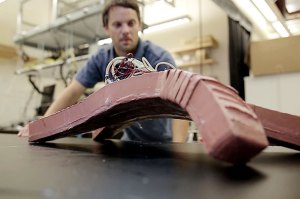
-
Science & Tech
‘It was sort of a eureka moment’
Harvard engineers demonstrated a novel engineering process by creating a self-assembling robot that folds up from a flat sheet of composite material and then walks away. The Gazette spoke with engineering Professor Robert Wood about the project.

-
Science & Tech
Airmail, to your door
Harvard engineering Professor Robert Wood lends his perspective to Amazon’s proposal to start a flying drone delivery service within a few years. His verdict is that FAA regulations and liability concerns will likely be bigger hurdles than the technology.

-
Science & Tech
‘Pop!’ goes the robot
A production method inspired by children’s pop-up books enables rapid fabrication of tiny, complex devices. Devised by engineers at Harvard, the ingenious layering and folding process will enable the creation of a broad range of electromechanical devices.
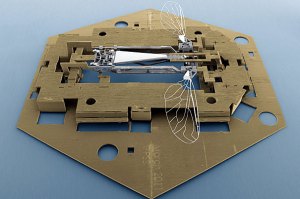
-
Science & Tech
Chips, efficient and fast
Professor Gu-Yeon Wei explores energy-efficient computing devices that are fast but draw minimal power.
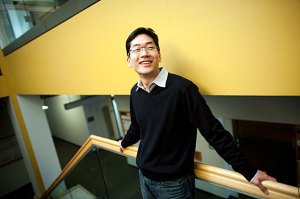
-
Science & Tech
A marriage of origami and robotics
A Harvard and MIT research team demonstrates how a single thin sheet composed of interconnected triangular sections can transform itself into another shape, without the help of skilled fingers, in a kind of origami robotics.
